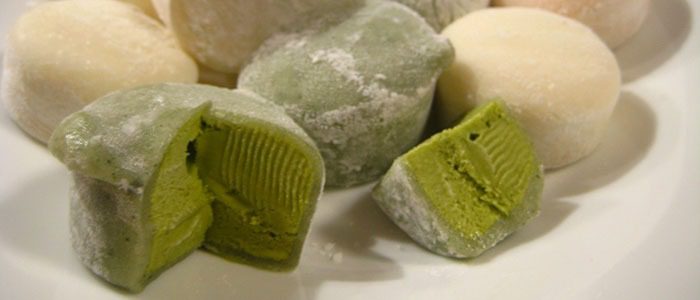Let’s Eat! Japanese Phrases For Eating Out
One of the universal aspects of humanity that transcends cultural or language boundaries is hunger. We all must receive nutrients somehow or another. One of our great pastimes of the day is to eat.
Sometimes we may eat at a restaurant or at home, sometimes alone and sometimes in a group. This would not change in Japan. If you’re wondering what some key Japanese phrases are for going to a restaurant, you just may be in the right place.
Japanese Phrases: At A Restaurant
When you walk into a restaurant, you may hear
“いらっしゃいませ (irasshaimase)!”
This is simply a common expression akin to saying, “Welcome”.
If you are at a sit-down restaurant, you’re likely to hear a worker as you,
“何名様ですか (nanmeisama desu ka)?”
This is asking you how many are in your party. Answer accordingly. For example, if you are in a group of 5 people including yourself, you can say,
“五人です (gonin desu)”.
If (s)he responds by saying,
“こちらへどうぞ (kochira e douzo),”
then follow the worker. You are being led to your table, and the worker is saying something akin to, “Right this way.”

Once seated at your table and being handed the menu, you should hear,
“こちらがメニューでございます (kochira ga menyu- de gozaimasu).”
You are likely to hear the phrase
“こちらがメニューになります (kochira ga menyu- ni narimasu)”
as well. This is just telling you, “Here is the menu.” If you hear your server ask
“お飲み物は何にしますか (onomimono wa nani ni shimasu ka)?”
You are being asked what you want to drink. When asked,
“ご注文はお決まりですか (gochuumon wa okimari desu ka)?”
you are being asked if you have decided upon what you want to order.
Time To Order
When ordering you say what you are ordering and add
“を下さい ((w)o kudasai)” or “をお願いします ((w)o onegaishimasu)”.
For instance, if you are ordering curry, you can say
“カレーを下さい (kare- (w)o kudasai)” or “カレーをお願いします (kare-(w)o onegaishimasu).”
You can also say how many servings you want, like
“カレー一つを下さい (kare- hitotsu (w)o kudasai)”.

If you are wondering what the difference is between kudasai and onegaishimasu, in this case, it’s essentially the same. They are both polite phrases. Onegaishimasu sounds just a bit more polite. Further, it is considered good etiquette to not make substitutions or change what you are ordering too much. But, if you must, you can use the phrase of:
“(insert subject) を抜きにしてもらえますか ((insert subject)(w)o nuki ni shite moraemasu ka)?”
to ask if some food item can be left out. For instance, if you cannot eat beef, you can ask,
“牛肉を抜きにしてもらえますか (gyuuniku (w)o nuki ni shite moraemasuka)?”
Paying The Bill
When it comes to paying and you want the bill, you can say,
“お勘定をお願いします (okanjou (w)o onegaishimasu).”
When you’re up to pay, don’t be surprised to hear,
“お会計は合計で(insert amount)円になります (okaikei wa goukei de (insert amount) en ni narimasu)”.
This will be how much you owe in Japanese yen. For instance, if your meal cost you 500 yen, it will be
“お会計は合計で五百円になります (okaikei wa goukei de gohyaku en ni narimasu).”
Let’s take a look at some popular Japanese foods you can enjoy while in Japan so you know what to order!
Japanese Foods
You’ve probably heard of sushi (寿司, sushi) and tofu (豆腐, toufu), but food in Japan is much more. Here are some unique foods that you can easily come across.
Rice Dishes
ご飯 (gohan) is plain white rice.
お握り or おにぎり (onigiri) is a rice ball.
お粥 (okayu) is a rice porridge.
オムライス (omuraisu) is an omelet with fried rice.
煎餅 (senbei) means rice crackers.
丼 (donburi) refers to a stew on rice.
Tempura
天ぷら (tenpura) refers to deep-fried foods. Some common fried foods are:
魚 (sakana) means fish.
海老 (ebi) refers to shrimp.
茄子 (nasu) refers to eggplant.
Though it might technically not be tempura, 豚カツ (tonkatsu) is a deep-fried pork cutlet.
かき揚げ (kakiage) is more popular in homes as you can make it with leftovers, but you can find it in restaurants. It’s essentially various different foods put together. Kakiage is often put on other foods, such as udon. Speaking of udon…
Udon
饂飩 or more often うどん (udon) refers to a dish with thick noodles. There are many different types. For example:
掛けうどん (kake udon) refers to udon noodles in a broth without trimmings.
狐うどん (kitsune udon) is udon in a dashi based soup stock with a big piece of fried tofu.
力うどん (chikara udon) is udon with hearty ingredients and a mochi rice cake.
笊うどん or ざるうどん (zaru udon) is a cold udon dish that is topped with shredded nori (海苔, seaweed) served on a bamboo tray with dipping sauce.
Udon isn’t the only noodle dish one can find in Japan! For example…
Ramen
醤油ラーメン (shouyu ra-men) is ramen in a clear brown broth served with a fair amount of soy sauce (醤油, shouyu, means soy sauce).
塩ラーメン (shio ra-men) is ramen in a yellow broth with a fair amount of salt (塩, shio, means salt).
豚骨ラーメン (tonkotsu ra-men) is ramen in a white broth with a strong pork flavor (豚骨, tonkotsu, means pork bone).
While still on the subject of noodles…
Soba
Soba (蕎麦 or そば) is a thin noodle made from buckwheat flour. Some soba dishes include:
狐そば (kitsune soba) is a hot soba soup topped with fried tofu.
狸そば (tanuki soba) is topped with bits of tempura batter called tenkasu (天かす).
山菜そば (sansai soba) is soba made with mountain vegetables (sansai, 山菜, means wild vegetables, especially mountain vegetables).
But enough about noodles now…
Yakitori
Yakitori (焼き鳥) is skewered and grilled chicken. Some forms of yakitori you may come across in your travels include:
ねぎま焼き鳥 (negima yakitori) serves the skewered chicken thighs with scallions.
つくね焼き鳥 (tsukune yakitori) is essentially a chicken meatball skewer.
手羽先焼き鳥 (tebasaki yakitori) is skewered chicken wings.
Though not yakitori, if we’re talking about grilled food, I should not leave off okonomiyaki (お好み焼き). It can be called a savory pancake, but note that it is a savory pancake; it is not sweet like you may be thinking upon hearing the word. It essentially comes with all sorts of things as you’d want it to be. In fact, the word essentially means “grilled as you like it”.
But, if you are in the mood for something sweet…

Japanese Sweets
Japanese sweets (和菓子, wagashi) include various unique treats. For instance:
生菓子 (namagashi) is a somewhat pricey treat that is typically shaped like a leaf or flower and often served with tea. It is mainly made out of fruit jellies or sweetened bean paste. Served very fresh.
お餅 (omochi) is a rice cake
大福 (daifuku) is a round mochi stuffed with sweet filling, usually red bean paste.
団子 (dango) refers to dumplings made of rice flour.
どら焼き (dorayaki) refers to a small sandwich – like desert consisting of two small pancakes – like patties and filled with a sweet Azuki red bean paste.
餡蜜 or more commonly あんみつ (anmitsu) is a desert consisting of agar jelly served with sweet Azuki bean paste, boiled peas, and a variety of fruits.
I hope this can help you if ever you find yourself hungry in Japan so you know what to order and how. But hey, if you’re already here at LingQ, why not continue learning more about the Japanese language? Check out this post in order to learn kanji. Knowing the kanji will come in handy and help you read restaurant menus.
Last but not least, if you’re curious to know where to find compelling content, LingQ (which is also available on Android and iOS) has thousands of hours of Japanese content that range from everyday conversations to the latest news articles. And if you cannot find content that suites you, you can always import content you love into LingQ. To learn more, check out this post about how I import anime into LingQ to help me study Japanese. Its the best way to learn Japanese online!
***
Caiman Cotton is a freelance Japanese translator who has studied the language for years. He hopes to one day also study Latin.


